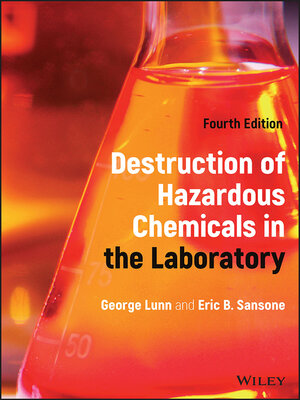
Sign up to save your library
With an OverDrive account, you can save your favorite libraries for at-a-glance information about availability. Find out more about OverDrive accounts.
Find this title in Libby, the library reading app by OverDrive.



Search for a digital library with this title
Title found at these libraries:
| Loading... |
Single volume reference providing procedural information for the destruction of a wide variety of hazardous chemicals
Destruction of Hazardous Chemicals in the Laboratory is a practical reference that describes procedures for the destruction of a comprehensive list of hazardous chemicals and provides general methods for the destruction of hazardous chemicals in the laboratory without the need for exotic reagents and equipment.
Unlike most other sources on this subject, detailed reaction parameters are provided to readers. These details will help the reader decide if a procedure will be appropriate. To further aid in reader comprehension, numerous tables throughout the book allow for ready comparison of procedures.
Destruction of Hazardous Chemicals in the Laboratory also describes the critical aspects of various protocols (e.g., UV lamp type and rate of ozone flow).
The updated fourth edition Includes an updated survey of the literature from 2012-2021 and features data mined from 1,500 papers. It also describes recent examples of methods that are generally applicable to organic compounds and greatly expands the section on methods for the destruction of pharmaceuticals in the laboratory.
In this book, readers can expect to find detailed information on:
Destruction of Hazardous Chemicals in the Laboratory is of immense value to researchers in the laboratory by enabling them to quickly and efficiently get rid of residual amounts of hazardous chemicals when a series of experiments has ended. The procedures in the text can also be incorporated into laboratory protocols.






